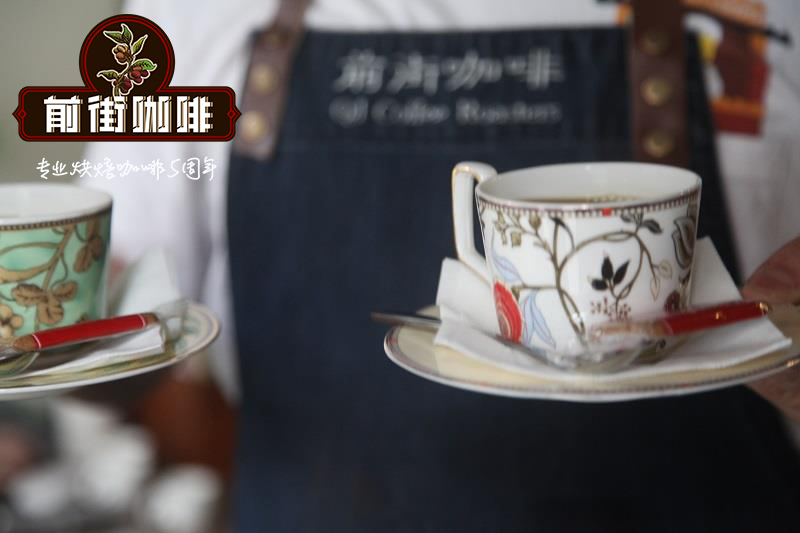How to make Malaba Coffee and drink Malaba Coffee? what are the famous coffee estates in famous producing areas?

Professional coffee knowledge exchange more coffee bean information please follow the coffee workshop (Wechat official account cafe_style)
Wind-stained coffee is a new flavor created inadvertently. In the 17th and 18th centuries, India shipped coffee beans to Europe by sailboat, which took six months. The raw beans were placed on the bottom of the barn and absorbed the moisture and salty taste of the sea. The raw beans arrived in Europe and had deteriorated. The color changed from dark green to the yellowish brown of rice. The acidity of the coffee almost disappeared, but it unexpectedly developed a strong nutty and cereal flavor. It tasted full, with a bit of black rice tea flavor. Nordic people like this kind of golden alternative coffee very much. In 1869, the opening of the Suez Canal and the advent of steamships shortened the sailing time between India and Europe, but customers began to complain that Indian coffee was "tasteless", losing the charming yellow and nutty flavor of the past, and orders plummeted. Indian exporters began to study the solution. The original coffee shipped to Europe took more than half of the time to become "transformed" and lost its original flavor, so exporters thought of the salty and wet environment blown by the Indian ocean along the coast of Malaba in southwestern India every year from late May to September. After several experiments, it was similar to the old golden coffee without acid, so it was named "monsoon coffee Malaba coffee", commonly known as wind-stained Malaba coffee. At present, the mode of production of wind-stained beans is to first select good raw beans and transport them to the coastal wind-stained field, spread them out and be blown by the moist southwest monsoon, and through frequent stirring by experienced staff, the beans will be evenly exposed to the wind. this process takes four to 16 months, the coffee beans will nearly double in size, and the color will change to yellow and white, becoming a unique Indian style-stained Malaba coffee.
Today, Monsooned Malabar AA Malaba Coffee is famous in the boutique coffee industry. It uses selected A-grade raw beans to be transported to the Mangalore weathering field, where they are graded and picked out, and then the sun-dried raw beans are exposed to the wet sea breeze for the process of wind stains. The beans will be evenly spread on the floor and flipped by rich veterans. Let these beans fully soak in the moisture of the sea breeze. The process of wind stain takes about 12 to 16 months, and finally the bean body will be about twice the original size, and the bean color will turn to wheat yellow. Finally, the unwind-stained beans or other sundries and defective beans will be screened again, and then the cup, grading and other post-making actions will be carried out.
Important Notice :
前街咖啡 FrontStreet Coffee has moved to new addredd:
FrontStreet Coffee Address: 315,Donghua East Road,GuangZhou
Tel:020 38364473
- Prev

Colombia Huilan-Garson Orchid Manor introduction _ Orchid Manor Kaddura Coffee Flavor description
Professional coffee knowledge exchange more coffee bean information please follow the coffee workshop (Wechat official account cafe_style) COLOMBIA HUILA GARZON country: Colombia Colombia production area: Huilan-Garson Huila-Garzon Manor name: orchid Manor LA ORQUIDEA Variety: Kaddura Caturra altitude: 1650-1740 m treatment: washing
- Next

The History of Malaba Coffee the Origin and Development of Malaba Coffee
Professional coffee knowledge exchange more coffee bean information Please follow the coffee workshop (Wechat official account cafe_style) when it comes to Asian coffee, most people will first think of Indonesian gold Manning, Toraya, or Vietnamese coffee, Laos coffee, as well as recently rammed up Taiwan coffee, China Yunnan coffee and so on. Indian coffee has a long history, and it is also an Asian coffee.
Related
- Detailed explanation of Jadeite planting Land in Panamanian Jadeite Manor introduction to the grading system of Jadeite competitive bidding, Red bid, Green bid and Rose Summer
- Story of Coffee planting in Brenka region of Costa Rica Stonehenge Manor anaerobic heavy honey treatment of flavor mouth
- What's on the barrel of Blue Mountain Coffee beans?
- Can American coffee also pull flowers? How to use hot American style to pull out a good-looking pattern?
- Can you make a cold extract with coffee beans? What is the right proportion for cold-extracted coffee formula?
- Indonesian PWN Gold Mandrine Coffee Origin Features Flavor How to Chong? Mandolin coffee is American.
- A brief introduction to the flavor characteristics of Brazilian yellow bourbon coffee beans
- What is the effect of different water quality on the flavor of cold-extracted coffee? What kind of water is best for brewing coffee?
- Why do you think of Rose Summer whenever you mention Panamanian coffee?
- Introduction to the characteristics of authentic blue mountain coffee bean producing areas? What is the CIB Coffee Authority in Jamaica?

